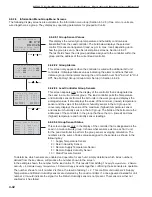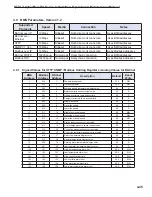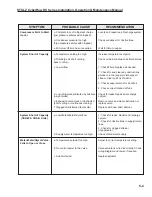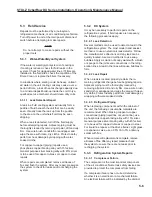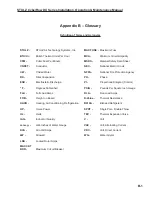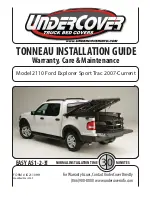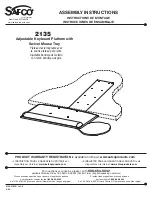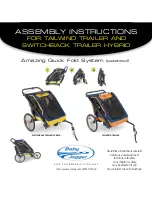
STULZ CyberRow DX Series Installation, Operation & Maintenance Manual
Condenser Pressure too
a. Non-condensable gas or air in the
Recover system, evacuate per Section
High (CRS-A Units)
system.
2.10.2.2, recharge. Replace drier/strainer.
b. Condenser air intake is blocked.
Remove debris and clean condenser.
c. Overcharge of refrigerant.
Reclaim excess refrigerant from system.
d. Condenser fan not operating.
Check pressure/temperature operating
switches and motor. Replace as needed.
Condenser Pressure too
a. Flow of water/glycol too low (cont.)
1. Check glycol solution level and
High (CRS-W, -G units)
concentration.
2. Valves not open or partially open.
Repair/replace as needed
3. Air in system - bleed system.
4. Check all strainers and clean if needed.
b. Water/glycol temperature too high.
Check fl ow and operation of drycooler.
c. Control pressure set too high.
Adjust controller to obtain correct
pressure.
d. Water/glycol solution not mixed prior
Remove solution and premix.
to adding to system.
Refi ll system.
Condenser Pressure too
a. Loss of refrigerant (indicated by
Locate and repair leak. Recharge system.
Low
bubbles in sight glass).
b. Condenser fan controls not set
Adjust or repair controls.
properly.
c. Control pressure set too low.
R410A- Readjust to 440 psig.
Noisy Compressor
a. Expansion valve stuck in open
Ensure feeder bulb is tight on suction line.
position (abnormally cold suction line).
Check operation and superheat.
b. Broken compressor valve
Replace compressor.
(compressor knocking, suction
pressure rises faster than 2lbs/min
after shutdown).
c. Worn or scarred compressor
Replace compressor.
bearings.
d. Liquid slugging.
System overcharged. Reclaim excess
refrigerant.
e. Scroll compressor not properly
Phase correctly at main power source.
phased.
DO NOT REWIRE COMPRESSOR.
SYMPTOM
PROBABLE
CAUSE
RECOMMENDATION
5-5
Summary of Contents for CyberRow DX CRS-042-G
Page 94: ......



